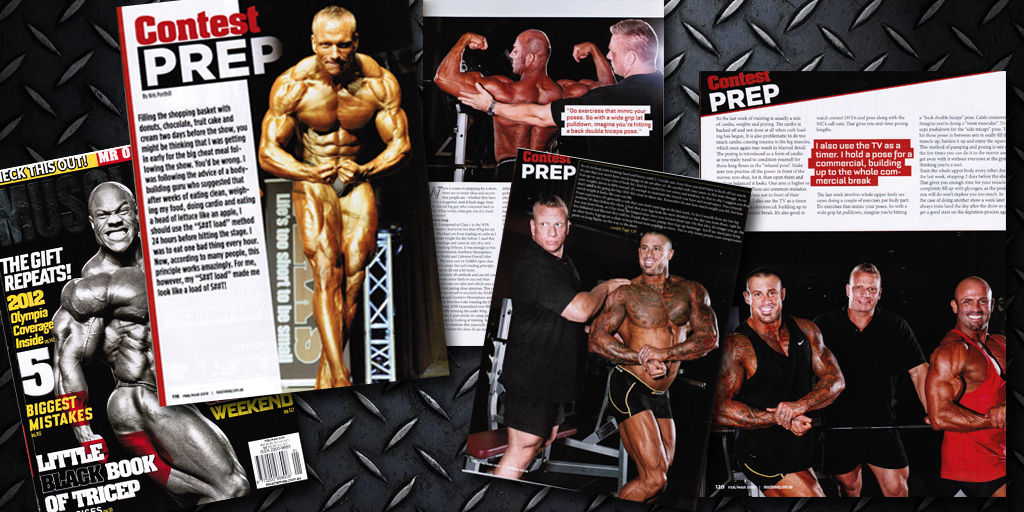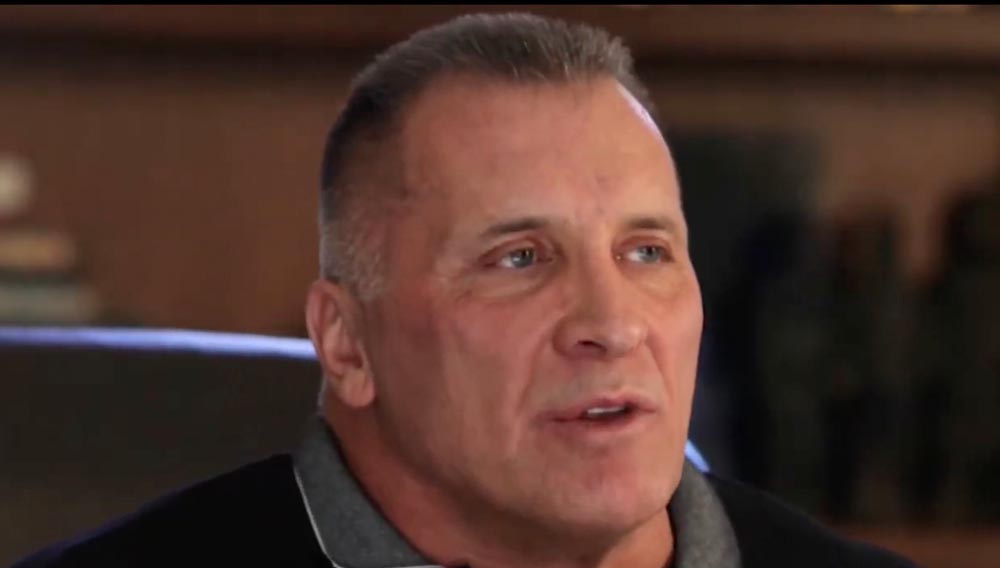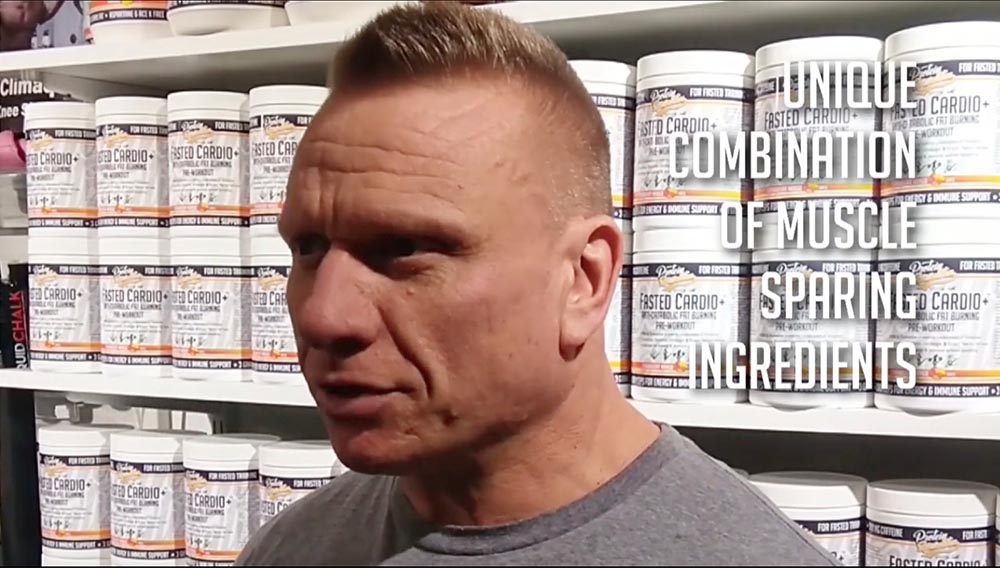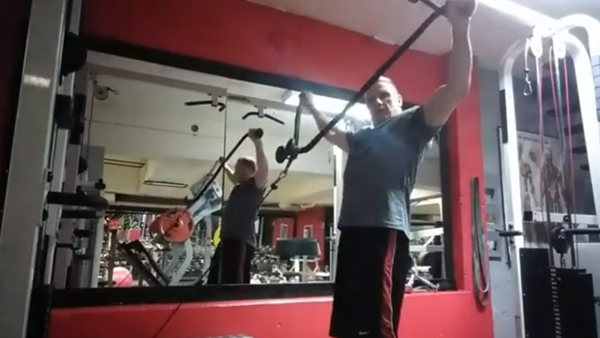Comp Prep Part 1 - Muscle Mag 2013
Filling the shopping basket with donuts, chocolate, fruit cake and cream 2 days before the show, you might be thinking that I was getting in early for the big cheat meal following the show. You’d be wrong. I was following the advice of a bodybuilding guru who suggested that after weeks of eating clean, weighing my food, doing cardio and eating a head of lettuce like an apple, I should use the S##T load method 24 hours before hitting the stage. I was to eat one bad thing every hour. Now according to many people this principle works amazingly, for me however, my S##T load made me look like a load of S##T!!!
When it comes to prepping for a show, there are so many ideas and secrets that people use whether they have read it in a magazine, seen it back stage, been told by the old big guy who competed back in the 70’s. What works, what gets you dry, hard, grainy, veiny? The list is long.
In 2009, I competed in Class 1 in the WFF, which meant I had to be under 87kg for my height. This kept me from loading on carbs as I had to make weight the day before. I used this to my advantage and came in very dry, very hard but lacking fullness. It was enough to win me the International, Southern Hemisphere, Australia, World and Universe Overall titles that year. The next year in NABBA open class I was able to adopt the carb loading principle allowing me to fill out a lot more.
I have tried nearly all methods, and can tell you which ones are more likely to succeed than others, which ones are safer and which ones can go wrong if not paying close attention. This year I used them on myself to win both the NABBA International and Southern Hemisphere and most recently, Brendan Luke winning the NABBA Queensland’s, IFBB Queenslands over 90kg and Chris Duffy winning the under 90kg.
As part 1 of this 2 part article on comp prep we should begin by looking at training. Sure it’s important to examine diet especially in the last few weeks before the show. It can make the difference between dry and striated, or soft and puffy. But we have to build the muscle first. It is after all, a bodybuilding show. So let’s look at the common held ideas about training that are adopted by most people and examine if they are logically sound. Most people in the off season eat anything and everything, throwing around big weights with not so much thought for form. Then all of a sudden 12 weeks out they start to drop the weight and get strict on their form in the belief that it will shape the muscle. Sound familiar? They do bicep curls in the cable cross over, attempting to build bigger peaks! Then they stop squatting heavy and go to leg extension for high reps in order to “cut more lines” into their quads.
The question is, how did you get the big muscle you had? Was it with heavy weights or light weights? Why can you see you peaks better 4 weeks out more than when you were 6 months out? Why is the form more strict now? Chances are you are leaner now so you see your muscles, you are lifting using the target muscle and not bicep curling with your whole body because the weight you did use was TOO heavy to begin with.
Building the physique that wins on the day is all about progressive training, time under tension, strength and hypertrophy training. All these factors go towards putting muscle on your frame. If you are training with really heavy weights all year round you will get very strong but if the reps are too low, you won’t build size. You take that strength and use it to lift heavy weight for reps. And so it goes until you are no longer in a calorie surplus and are unable to build more muscle. You still need to maintain the muscle you worked so hard to grow. So you can’t all of a sudden switch to light weights and high reps as the body will sense that you no longer need the over developed muscle as you can lift the weight using less muscle. So you have to keep the weight relatively high and go from doing 100kg on the bench for 8 reps to maybe doing 80-90 for 6-8 or even 10 depending on what carb depleted state you are in. You can also start to do more giant sets, super sets, drop sets and other high intensity techniques in order to get an increased “time under tension” and it also has the added bonus of being great cardio vascular training, meaning you will burn a lot of fat in your EPOC (Exercise Post Oxygen Consumption).
So try and keep your training hard and heavy up until 2-3 weeks out. Even then you don’t have to back off to much, it’s just you won’t have much energy to do set after set. Be careful with your joints in this state though. As we lean up we are losing a lot of body fat. And fat is useful for our joints and tendons. So that is why I suggest you drop your weights by down to 80% instead. It’s enough to maintain the muscle you have and avoid injury. You certainly don’t need to be going for big 1RM this close to show day. Remember it’s not how much weight you lift, but how much weight it looks like you can lift.
From experience, it’s generally a rule by many that you don’t train legs in the last week. In fact I usually have my last leg work out 10 days before the show. I find that your legs look the most detailed on the day you train them, right before you train them as it has been the longest time since you trained them last. On that idea, the longer you go, the less inflamed and blurred they will. People don’t even pump their legs up back stage. You’l see most guys lying on their backs, legs up on a chair to keep blood from pooling in them. This is why many people wear compression pants on long flights on the way to the show.
So the last week of training is usually a mix of cardio, weights and posing. The cardio is backed off and not done at all when carb loading has begun. It is also problematic to do too much cardio, causing trauma to the leg muscles, which once again may result in blurred detail. The posing is introduced as a form of cardio as you really need to condition yourself for those long flexes in the “relaxed pose”. Make sure you practice all the poses, in front of the mirror, eyes shut, hit it, then open them and see how balanced it looks. One arm is higher or legs aren’t flexed. These are common mistakes beginners make when not in front of their bathroom mirror. I also use the TV as a timer. I hold a pose for a commercial, building up to the whole commercial break. It’s also good to watch contest DVD’s and pose along with the Mc’s call outs. That gives you real time posing lengths.
The last week involves whole upper body sessions doing a couple exercises per body part. Do exercises that mimic your poses. So wide grip lat pull down, imagining you’re hitting a “back double bicep” pose. Cable cross over imagining you’re doing a “most muscular”. Tricep push down for the “side tricep” pose. Then hit these poses in between sets to really fill the muscle up, harden it up and enjoy the squeeze. This method of pumping and posing is one of the few times you can do it in the mirror and get away with it without everyone at the gym thinking you’re a tool.
Train the whole upper body every other day in the last week, stopping 2 days before the show. That gives you enough time for your muscles to completely fill up with glycogen, as the posing you will do wont deplete you too much. In the case of doing another show a week later always train hard the day after the show so you get a good start on the depletion process again.




